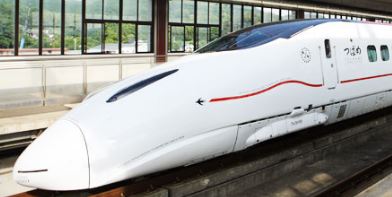As some in the transport industry want to revive supersonic air travel, others are looking at ways of making rail travel faster.

And, as with flight, some of the claims of speeds achieved, and reduced times from point to point, are difficult to get your head around.
When Japan introduced the first Bullet trains, they were rightly described as the way of the future.
France followed, but other countries that could arguably benefit from fast trains — including Australia and the US — have been slow on the uptake.
So how fast can a train go? Well, the MagLev train connecting Shanghai and its airport has an operational maximum speed of 430 kilometres per hour, and has been whisking passengers along at an average of 251kph.
But a new Japanese MagLev promises speeds of up to 590kph — which, if you’re not metrified yet, is 366 miles per hour. Various trains operating in Europe can travel up to 360kph on regular tracks.
But Hyperloop technology, which was first proposed by American billionaire Elon Musk and is being considered in the United Arab Emirates and elsewhere, promises speeds of up to 1,200 kph.
All of this, however, is some time off. For the moment, China and Japan are the places to go for a fast-train experience. There’s some information on Japanese trains here. (As always, links are not endorsements.)
Of course, many train aficionados won’t be bothered by this. For them, it’s all about the journey.
